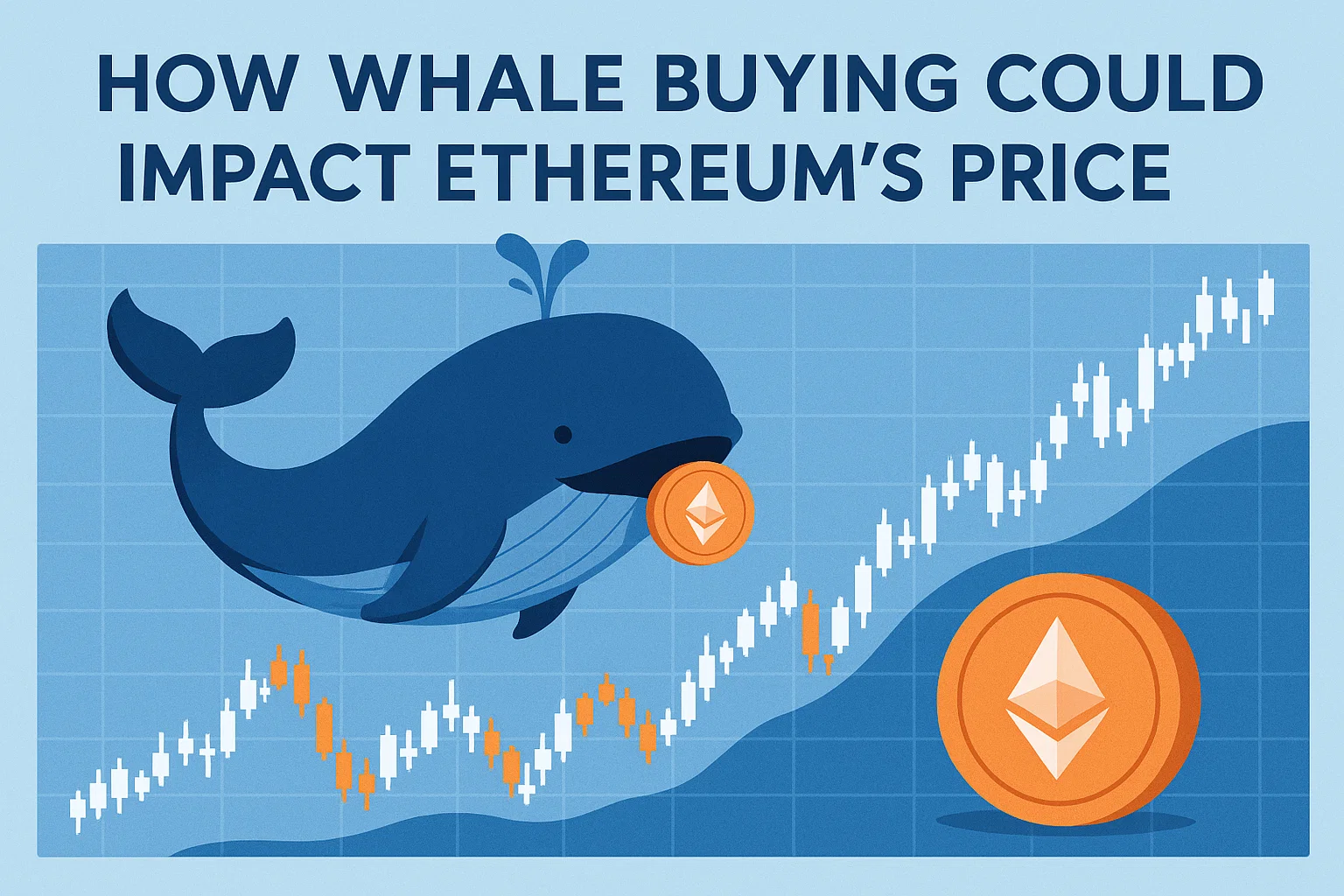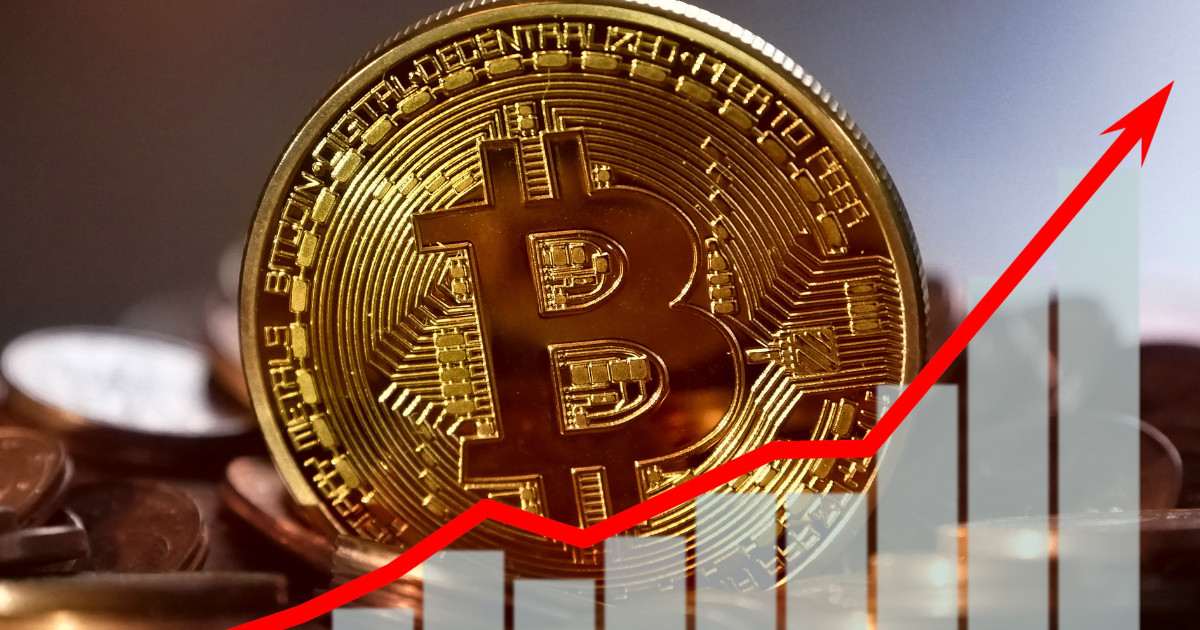Ethereum Whales Buy Big as Crypto Market Dips

While the broader crypto market experiences yet another round of correction, one group of investors appears unfazed: Ethereum whales. These large holders, known for their ability to move markets, are quietly accumulating ETH even as prices waver. In times when retail traders panic-sell, whales often do the opposite, taking advantage of discounts in high-quality assets. Their renewed accumulation signals growing confidence in Ethereum’s long-term value, even amid short-term uncertainty.
In recent weeks, blockchain data has revealed a sharp increase in ETH whale activity, with thousands of coins being transferred to cold storage wallets. This trend stands in contrast to the broader sell-off in altcoins and Bitcoin. The pattern is clear: while the market sentiment is fearful, deep-pocketed investors are seeing opportunity.
In this article, we’ll explore why Ethereum whales are buying aggressively during this market pullback, what data supports this trend, how it could influence ETH prices in the coming weeks, and what it tells us about the broader trajectory of the crypto market. We’ll dive into on-chain analytics, market psychology, and future catalysts, providing a detailed and SEO-optimized guide to understanding this major shift in Ethereum’s dynamics.
Ethereum Whales: Who They Are and Why They Matter
Before diving into the data, it’s important to understand who Ethereum whales are and why their actions hold such weight in the crypto ecosystem.
Defining Ethereum Whales
In crypto terminology, a “whale” refers to an entity holding a significant amount of a digital asset—typically large enough to influence market prices through their trades. In Ethereum’s case, whales often hold over 10,000 ETH or more, equivalent to tens or even hundreds of millions of dollars. These can include institutional investors, early adopters, crypto hedge funds, and even DeFi protocols managing substantial liquidity. Because of their immense holdings, whale movements—whether accumulation or distribution—often signal shifts in market confidence. When whales accumulate during downturns, it’s often seen as a bullish indicator, suggesting they believe current prices undervalue the asset’s long-term potential.
Whale Influence on Market Behavior
Ethereum whales wield significant influence because their trades can shift liquidity and sentiment across exchanges. A coordinated buying spree or withdrawal from exchanges often implies reduced selling pressure, tightening supply, and paving the way for potential price recovery. Conversely, mass whale selling can trigger fear and downward spirals. Thus, tracking on-chain whale activity provides a window into the psychology of the market’s most informed participants. And right now, all signs point toward confidence—not fear.
On-Chain Data Shows Whales Are Accumulating ETH

Blockchain transparency allows anyone to monitor wallet behavior, and the latest on-chain data paints a compelling picture of Ethereum accumulation.
Massive Whale Wallet Growth
According to analytics firm Santiment, the number of Ethereum addresses holding between 10,000 and 100,000 ETH has surged to its highest level in months. This marks a reversal from earlier periods when whales reduced exposure during ETH’s rally. The spike suggests a strategic re-entry as prices cooled off. Glassnode data also indicates a steady increase in ETH moving off centralized exchanges into long-term storage, suggesting that large holders are accumulating rather than preparing to sell. Typically, exchange outflows correlate with price stabilization or impending bullish reversals, as circulating supply tightens.
Whale Transfers During the Pullback
Blockchain trackers have identified several large transactions, each exceeding tens of millions of dollars’ worth of ETH, being transferred from exchanges like Binance and Coinbase to private wallets. Such patterns are historically associated with accumulation phases—when whales buy dips and hold until market recovery. Moreover, whale clusters on Ethereum’s price charts—zones where whales previously bought significant quantities—are re-emerging as support zones. Analysts note that whales seem to be defending key levels near $3,000–$3,200, indicating strong conviction in this price range.
Why Ethereum Whales Are Buying the Dip
The whale accumulation trend raises an important question: Why are they buying now, while retail investors are selling? Several interconnected factors explain this calculated behavior.
Anticipation of Ethereum’s Next Bull Phase
Whales typically operate on longer time horizons. They aren’t chasing short-term pumps; instead, they position themselves for macro moves. Ethereum’s fundamentals—its dominance in DeFi, NFTs, and smart contracts—remain unrivaled. As on-chain activity grows and Layer-2 scaling solutions like Arbitrum and Optimism reduce gas fees, the network’s value proposition strengthens. These investors see the current market pullback as a temporary retracement in a longer bull cycle. By accumulating now, they’re effectively front-running the next phase of institutional adoption and retail re-entry once sentiment turns bullish again.
The Ethereum ETF Catalyst
One of the biggest drivers of whale optimism is the potential approval of a spot Ethereum ETF. Following the success of Bitcoin ETFs, market watchers expect Ethereum to be the next major cryptocurrency to receive regulatory approval for similar financial products. This would unlock billions in institutional capital, potentially leading to massive demand for ETH. Whales, aware of the long-term implications, appear to be accumulating ahead of this catalyst, betting on higher prices once ETFs begin trading.
Undervaluation Relative to Bitcoin
While Bitcoin often dominates headlines, Ethereum’s valuation metrics show it might be undervalued relative to Bitcoin. On-chain ratios like the ETH/BTC pair indicate Ethereum is trading near multi-year lows versus Bitcoin. Historically, these levels have preceded strong ETH rebounds as capital rotates from Bitcoin into altcoins. Savvy investors are seizing this relative undervaluation as a prime opportunity to accumulate ETH before a potential market rotation.
Confidence in Ethereum’s Upgrades and Staking Model
The success of Ethereum’s Proof-of-Stake (PoS) transition and the increasing amount of ETH locked in staking contracts have reinforced trust in its long-term viability. Over 33 million ETH—around 27% of total supply—is now staked, reducing liquid circulation. Whales accumulating and staking ETH simultaneously strengthen the asset’s scarcity dynamic, contributing to a deflationary ecosystem under the EIP-1559 burn mechanism. Simply put, Ethereum whales are positioning themselves for both yield and capital appreciation in one move.
The Broader Crypto Market Context
Ethereum’s whale activity doesn’t occur in isolation. It’s part of a broader landscape where macroeconomic uncertainty, risk appetite, and market cycles intersect.
Crypto Market Pullback Explained
After months of steady growth, the crypto market has experienced a natural correction. Bitcoin retraced from its highs, dragging the rest of the market with it. Factors include profit-taking, U.S. regulatory ambiguity, and global liquidity tightening. However, such pullbacks are typical within bull markets—they allow the market to reset leverage, shake out weak hands, and build stronger foundations for future rallies. In this environment, Ethereum’s resilience stands out. Despite the broader sell-off, ETH has maintained key support levels better than most altcoins, highlighting investor confidence in its fundamentals.
Institutional Behavior Mirrors Whale Moves
Interestingly, institutional investors appear to be following a similar pattern to whales. Data from CoinShares shows positive inflows into Ethereum investment products even during weeks when Bitcoin products experienced outflows. This indicates that professional investors see Ethereum’s dip as a buying opportunity, aligning with on-chain whale behavior.
Market Psychology Fear for Some, Opportunity for Others
Market pullbacks often exaggerate emotional responses. Retail traders, driven by fear and short-term losses, tend to sell near bottoms, while seasoned investors buy. This psychological divergence creates ideal accumulation zones for whales. When “fear” dominates crypto sentiment indices, whales historically increase buying. They understand that wealth in crypto is often built during bear phases, not bull peaks.
How Whale Buying Could Impact Ethereum’s Price

The surge in whale accumulation has both immediate and long-term implications for Ethereum’s price trajectory.
Short-Term Effects—Reduced Selling Pressure
When whales transfer ETH from exchanges to private wallets, it reduces the available supply. This action lowers selling pressure and helps stabilize price volatility. If retail selling slows and whale accumulation continues, the market could see an imminent supply squeeze, creating a foundation for a sharp rebound.
Long-Term Effects—Institutional and Retail Confidence
Sustained whale accumulation often serves as a signal for broader market confidence. Retail investors and institutions tend to interpret whale behavior as “smart money” positioning. As these patterns gain attention, they can trigger follow-on buying, amplifying Ethereum’s upside momentum. Additionally, if ETH maintains its deflationary trend through ongoing burns and staking growth, the long-term supply dynamics could lead to price appreciation independent of Bitcoin’s moves.
Potential for a Mid-Term Rally
Historically, whale accumulation phases precede multi-month rallies. In 2020, similar patterns emerged before Ethereum’s explosive rise in 2021. If history rhymes, current whale behavior could foreshadow a significant upward move once macro conditions stabilize.
Risks and Considerations for Investors
While whale accumulation paints a bullish picture, it’s essential to approach the market with realistic expectations and a sound strategy.
Market Volatility Remains High
Crypto remains volatile, and Ethereum is no exception. Whale accumulation doesn’t guarantee immediate upside—prices could remain range-bound or dip further before recovering. Patience is crucial, as these accumulation phases often unfold over weeks or months.
Regulatory Risks and Market Sentiment
Global regulatory developments can still impact Ethereum’s near-term performance. Delays in ETF approvals, new taxation laws, or unexpected policy decisions could dampen sentiment temporarily. Investors should monitor these factors closely, even amid bullish on-chain signals.
Diversification Still Matters
While Ethereum remains a cornerstone of the crypto market, smart portfolio management involves diversification. Investors may benefit from balancing ETH exposure with other assets, stablecoins, or staking strategies to manage downside risk.
The Future Outlook: Are Whales Signaling the Next Ethereum Rally?
The consistent pattern of whale accumulation amid market dips suggests something deeper is brewing.
Growing Institutional Integration
With Ethereum continuing to dominate decentralized applications, tokenization, and stablecoin ecosystems, institutions view it as a long-term infrastructural play rather than a speculative gamble. As tokenized real-world assets and enterprise blockchain adoption grow, Ethereum could become the backbone of digital finance. Whales accumulating now are likely anticipating this transformation.
Long-Term Bullish Setup
On-chain metrics such as exchange outflows, low funding rates, and rising staking participation collectively suggest Ethereum is entering a late-stage accumulation zone. Combined with historical cycle patterns, this points to an upcoming price expansion phase once macro headwinds ease.
The Bigger Picture—Confidence in the Ecosystem
Despite market volatility, Ethereum continues to innovate. The upcoming Danksharding upgrades aim to drastically increase network scalability, while the DeFi and NFT sectors continue to thrive. For whales, these fundamentals reinforce long-term conviction. As one analyst aptly put it: “Whales don’t chase headlines—they accumulate conviction.”
Conclusion
Ethereum whales are on a buying spree as the broader crypto market pulls back, and their behavior offers a window into what may come next. The combination of strong fundamentals, potential ETF approval, undervaluation versus Bitcoin, and Ethereum’s deflationary mechanics creates a compelling setup for long-term growth.
On-chain data support the view that these large investors are accumulating aggressively, moving assets off exchanges, and preparing for the next leg higher. While short-term volatility may persist, the underlying message is clear—confidence in Ethereum remains strong among smart money. For retail investors, understanding whale behavior can be an invaluable tool for timing entries, gauging sentiment, and making informed decisions. As the saying goes: “Follow the money.” In this case, the money is flowing into Ethereum—and that’s a bullish sign for the months ahead.
FAQs
Q: What are Ethereum whales?
Ethereum whales are individuals or entities that hold large quantities of ETH, typically over 10,000 coins. Their transactions can influence price trends and market sentiment due to their large holdings.
Q: Why are Ethereum whales buying during the market pullback?
Whales are accumulating ETH because they view the pullback as a buying opportunity. They expect long-term growth fueled by strong fundamentals, potential ETF approvals, and Ethereum’s deflationary supply model.
Q: Does whale accumulation guarantee a price increase?
Not immediately. Whale accumulation often precedes rallies but doesn’t cause instant gains. It indicates strong confidence and typically sets the stage for future uptrends.
Q: How can I track whale activity on Ethereum?
You can use on-chain analytics platforms like Glassnode, Santiment, or Whale Alert to monitor large transactions, exchange outflows, and whale wallet movements.
Q: Is now a good time to buy Ethereum?
That depends on your investment goals and risk tolerance. While whale accumulation is bullish, always diversify your portfolio and consider both technical and macro factors before investing.
Read More.Crypto Market Cap Soars to New All Time High




